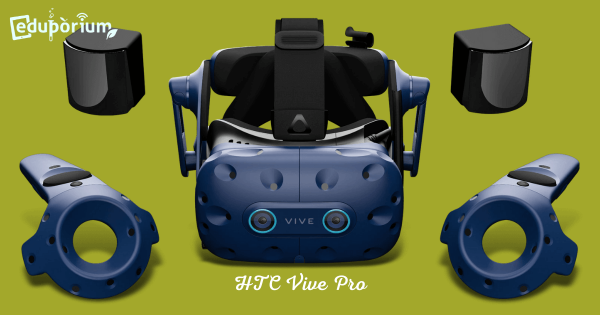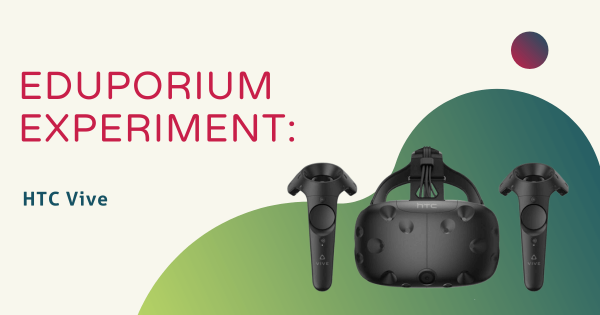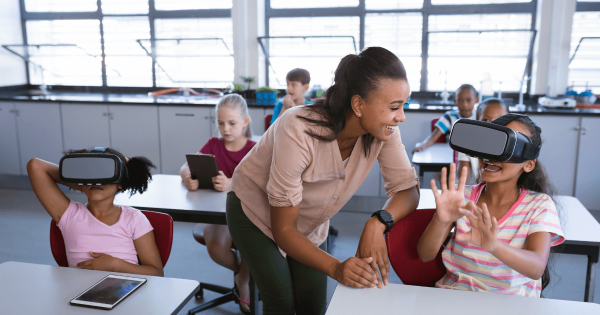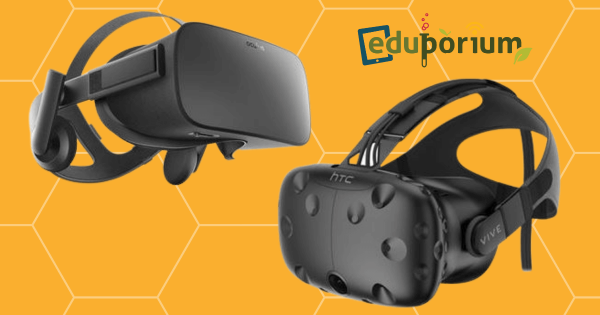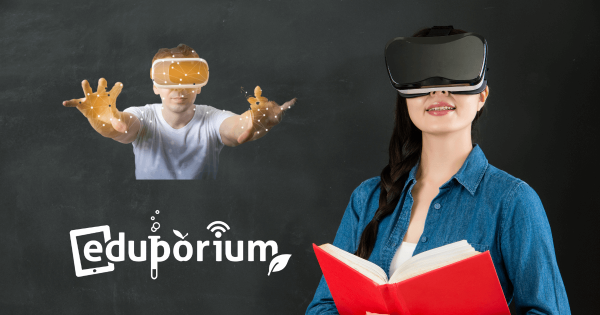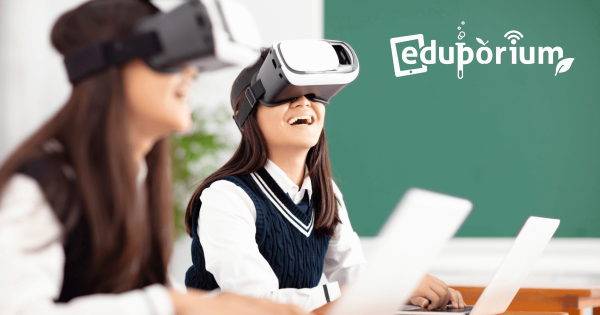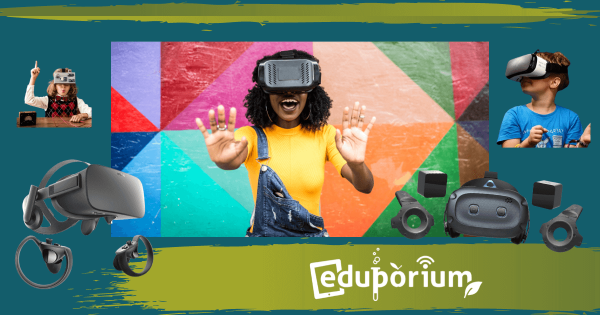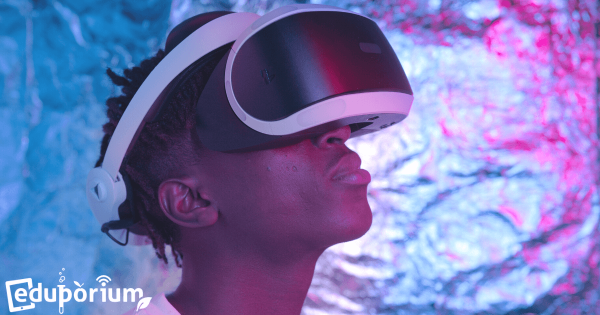The Vive Pro leverages enhanced audio and incredible optics to deliver superior STEM instruction with a constantly growing library of VR content. It’s set to revolutionize the way you teach in the 21st century! Now, it’s a part of our store as well, joining other big names in educational VR solutions.
HTC Vive
The HTC Vive VR system represents a groundbreaking frontier in education, revolutionizing the traditional classroom experience by immersing all children in interactive and three-dimensional learning environments. This virtual reality system combines precision tracking, high-quality graphics, and immersive motion controllers to create a truly unparalleled educational experience. Incorporating the HTC Vive VR system into your educational settings opens up a world of new possibilities within STEM learning. Students can explore historical landmarks, dissect virtual organisms, or even travel to space, all from the comfort of their classroom. This hands-on and immersive approach transcends traditional teaching methods, keeping students' attention and enhancing their understanding of more complex subjects. It's not just a tool for learning but also a gateway to a new era of dynamic and immersive education.
The value of the HTC Vive in education lies in its ability to foster engagement, collaboration, and critical thinking. Whether it's in a chemistry experiment, architectural design, or historical reenactment, the VR system allows students to actively participate in their learning, making abstract concepts tangible and very much memorable for them all. Further, the HTC Vive promotes inclusivity by accommodating students with various learning styles. Visual and kinesthetic learners, particularly, benefit from the interactive nature of virtual reality, creating a more equitable educational experience. With technology becoming increasingly integral to society, integrating tools like the HTC Vive prepares children for a digital future. This cultivates essential skills such as problem solving, adaptability, and technological literacy, providing a transformative educational experience that goes beyond textbooks and lectures.
-
Eduporium Experiment | HTC Vive VR System
VR is making its way into the educational sphere, empowering students to explore previously unreachable destinations and interact directly with virtual objects. A few weeks ago, I experimented with the Oculus Rift virtual reality system, and this time I got to try out the HTC Vive—just another perk of working at Eduporium! -
Find a Way to Get VR in your Classroom
To be honest, it’s been quite a while since any one technology has had as much potential in the classroom as virtual reality is wielding right now. In fact, it has monumental potential in all sorts of avenues, like healthcare, military operations, and entertainment, but we’re really interested in its implications on education. -
Eduporium Weekly | VR and Its Real-World Applications
As time goes by, virtual reality is becoming more than an insanely cool way to play video games or watch movies. It’s helping train STEM professionals and prepare people for the workforce and some of the common uses that could soon be a regular part of virtual reality. It’s also an effective instructional tool across K-12. -
5 Educational VR Systems you Need in your Classroom
Virtual reality is coming. And, it’s coming quicker than most of us realize. Even in education, virtual reality is finding its way into the classroom and offering students the chance to explore learning with a technology that’s unlike anything else. With its immersive capabilities and incredibly vivid graphics, VR is poised to disrupt education. -
It Really Was A Gamechanging VR Event... Thanks To You
We had a crowd that was larger than expected at Café Escadrille in Burlington, MA and tons of immersive learning in the form of presentations and virtual exploration. Attendees included educators and industry enthusiasts made up of VR experts and novices who all shared the same passion for exploring this technology. -
Try The Oculus Rift, HTC Vive, And Gear VR—For FREE
We’ve been working hard perfecting our skills, as you can see above, and we’re ready to put on a great event. Come sample some of the best virtual reality headsets, including HTC Vive, Oculus Rift, Samsung Gear VR, and more at our FREE hands-on workshop and networking event! You’ll learn from expert speakers and get to try the headsets. -
Eduporium Weekly | A Virtual Reality Takeover?
Its potential is enormous and the learning opportunities it helps create are astounding. Some teachers, however, shy away from trying it because they assume that it’s too complicated or too expensive. The truth is that it’s outrageously easy to use and extremely affordable—even for educators. So, does VR have a future in K-12 classrooms?




